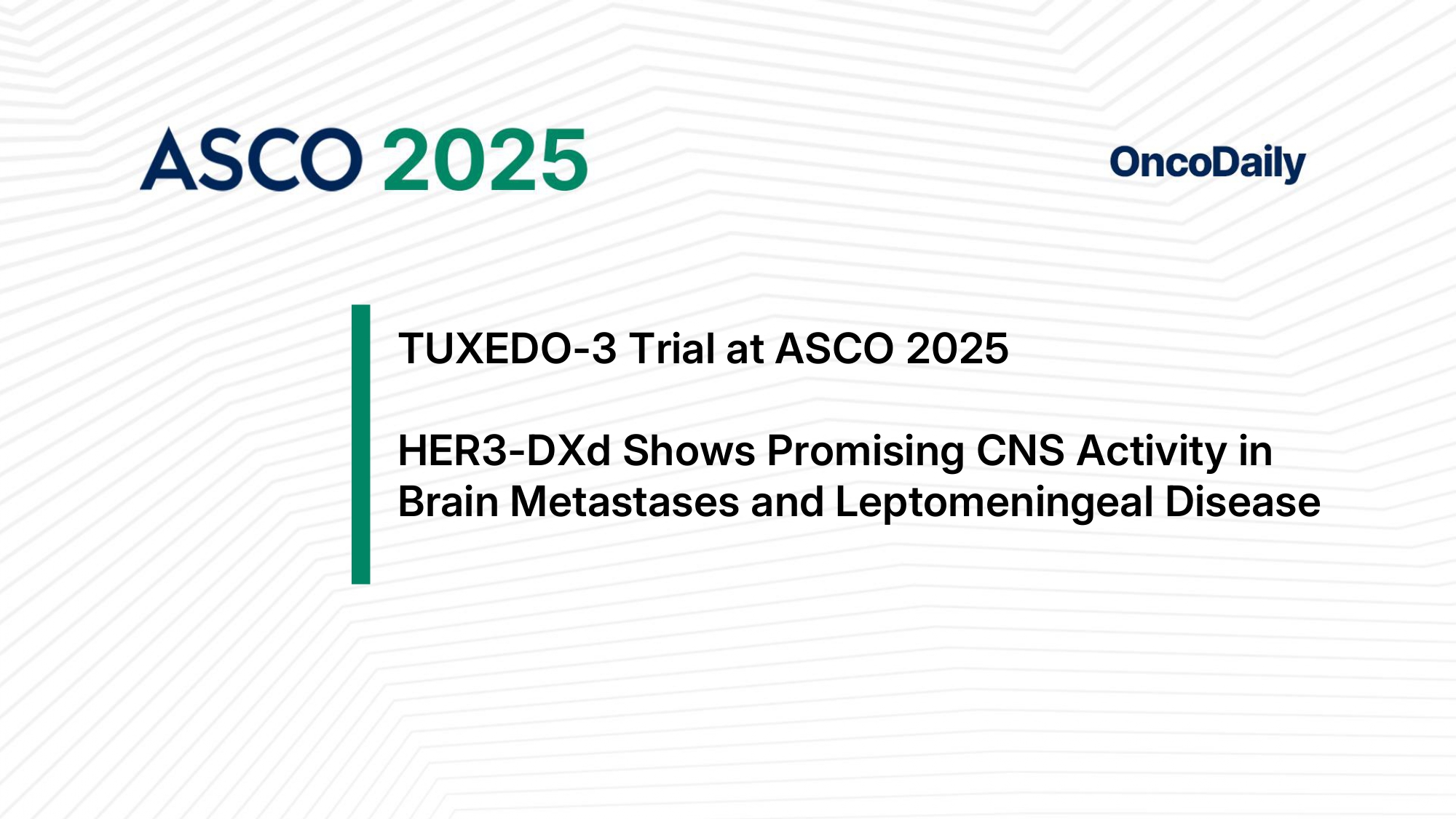Fresh from the podium at ASCO 2025, the TUXEDO-3 trial introduces a promising therapeutic strategy for patients suffering from brain metastases (BM) and leptomeningeal disease (LMD)—two of the most devastating complications of solid tumors. The results were presented by Matthias Preusser, MD, from the Division of Oncology, Department of Internal Medicine I, Medical University of Vienna. HER3-DXd, a HER3-directed antibody-drug conjugate, demonstrated encouraging intracranial activity and survival outcomes in patients with HER3-expressing tumors involving the central nervous system (CNS), including breast cancer, non-small cell lung cancer (NSCLC), and other solid tumors.
Background
BM and LMD represent advanced manifestations of systemic malignancies and are associated with poor prognosis, reduced quality of life, and limited therapeutic options. Conventional treatments, including radiotherapy and systemic chemotherapy, often have limited CNS penetration and suboptimal efficacy. HER3 is frequently expressed in CNS metastases from HER2-negative breast cancer and EGFR-mutated NSCLC. HER3-DXd is an antibody-drug conjugate (ADC) combining a monoclonal antibody targeting HER3 with a topoisomerase I inhibitor payload, designed to enhance drug delivery to HER3-expressing cells, including those in the brain and leptomeninges. Preclinical and early clinical data have suggested its potential for CNS activity, prompting investigation in the TUXEDO-3 trial—a study aimed at addressing the unmet needs of patients with CNS involvement from advanced solid tumors.
Methods
TUXEDO-3 (NCT05865990) is an international, multicenter, single-arm, phase II trial designed to evaluate the efficacy and safety of HER3-DXd in three cohorts:
- Cohort 1: Patients with brain metastases from metastatic breast cancer (mBC)
- Cohort 2: Patients with brain metastases from advanced non-small cell lung cancer (aNSCLC)
- Cohort 3: Patients with leptomeningeal disease (LMD) from any solid tumor
Eligibility criteria included age ≥18 years, ECOG performance status 0–2, histologically confirmed disease, and a left ventricular ejection fraction ≥50%. For cohorts 1 and 2, participants had to have at least one brain lesion ≥10 mm by MRI and have received at least one prior line of systemic therapy. Cohort 3 required LMD diagnosis per EANO-ESMO criteria.Patients received HER3-DXd at a dose of 5.6 mg/kg intravenously every 3 weeks (Q3W) until progression, unacceptable toxicity, or withdrawal.
Study Design
The study employed Simon’s two-stage design to assess primary endpoints:
- Cohorts 1 & 2 (BM): Intracranial objective response rate (IC-ORR) per RANO-BM criteria, assessed by local investigators.
- Cohort 3 (LMD): 3-month overall survival (OS) rate.
The primary efficacy threshold was met if ≥3 responses or 3-month survivors were observed per cohort (null hypothesis: ≤5%; alternative: ≥25%). A total of 60 patients (20 per cohort) were targeted for enrollment.
Results
A total of 61 evaluable patients were enrolled between December 2023 and July 2024 across 8 centers in Austria and Spain.
Median age:
- Cohort 1 (mBC BM): 57.0 years (range 35.0–75.0)
- Cohort 2 (aNSCLC BM): 59.5 years (range 37.0–72.0)
- Cohort 3 (LMD): 51.5 years (range 40.0–66.0)
Median follow-up:
- Cohort 1: 4.4 months (1.4–10.1)
- Cohort 2: 4.3 months (0.2–11.0)
- Cohort 3: 3.5 months (0.8–8.6)
Primary endpoints met in all cohorts:
- Cohort 1 (mBC BM): 5 of 21 patients (23.8%) achieved intracranial responses. Importantly, 2 responders (40%) had previously received another topoisomerase I-based ADC.
- Cohort 2 (aNSCLC BM): 5 of 20 patients (25.0%) had intracranial responses.
- Cohort 3 (LMD): 11 of 20 patients (55.0%) were alive at 3 months.
Safety: HER3-DXd was generally well-tolerated. No new safety signals emerged. Neurological symptoms, neurocognitive function, and quality of life remained stable or improved during treatment.
Biomarker analysis: Tumor HER3 expression did not correlate with treatment response, suggesting that CNS efficacy may not be limited to HER3-high tumors.
Key Findings
- HER3-DXd demonstrated notable intracranial activity in both breast and lung cancer brain metastases, with IC-ORRs approaching 25%.
- The 3-month OS rate of 55% in LMD patients is encouraging given the typically dismal prognosis in this setting.
- HER3 expression was not predictive of response, supporting potential use beyond HER3-high tumors.
- The treatment was neurologically safe, with preservation of cognitive function and quality of life metrics over the study period.
You can read the abstract here.
